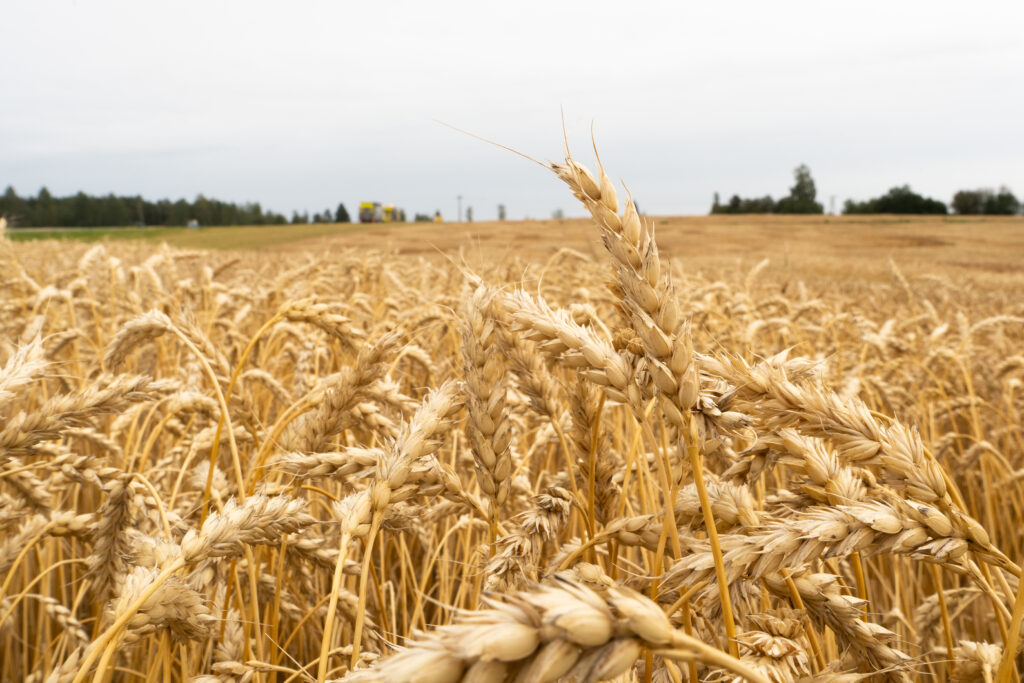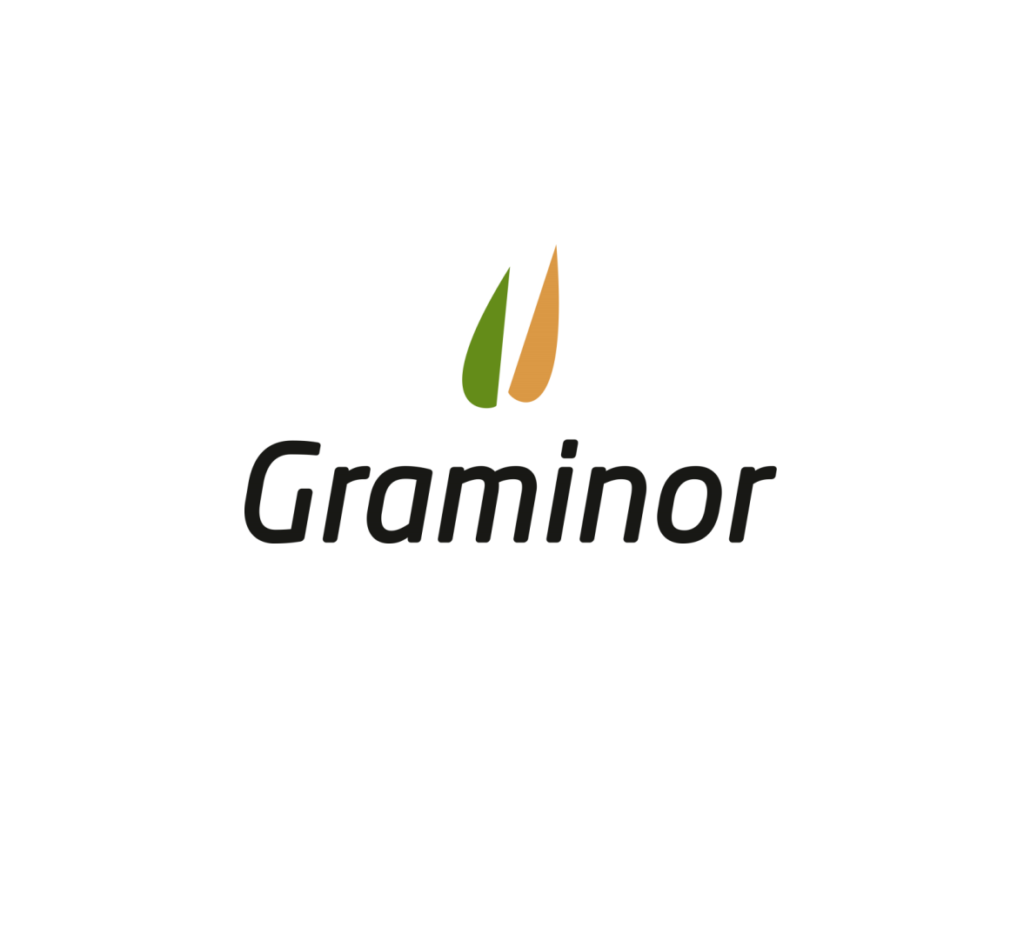


Wheat breeder for 30 years – Meet Jon Arne!
We want to showcase the people who together make up Graminor – our great employees! Next up is wheat breeder Jon Arne Diseth, who has worked in wheat breeding for 30 years this year. We’ve asked him some questions to give an insight into his workday.
How long have you worked at Graminor?
I’ve had roughly the same job that I have now since February 1993. That’s long before Graminor. Back then, cereal breeding was organized as a research project and funded by the State Cereal Department, and wheat breeding took place at Ås, at what was then called Norges Landbrukshøgskole (NLH). In 2001, wheat breeding was moved from Ås to Bjørke. In the meantime, Norwegian Cereal Breeding Ltd. had been formed. It was the precursor to Graminor, but only involved cereal breeding.
I had the opportunity to get into wheat breeding when I finished my regular studies at NLH. During Borlaug’s heyday in the 1960s and 1970s, a collaboration was started between NLH and CIMMYT, and then it so happened that the year I finished at NLH, someone figured out that this collaboration should be developed by sending a Norwegian student to the research center in Mexico. It was organized as a PhD program where I spent two years doing research at CIMMYT, taking necessary courses and writing the thesis at NLH. After this, I was offered to come back to CIMMYT as a postdoc. After I had been there for two more years, the then Norwegian wheat breeder had quit, and I was encouraged to apply. Since then, I have been working in wheat breeding in Norway.

What does your role in the company implies?
I’m responsible for ensuring that the Norwegian farmer gets the best possible wheat varieties. We do this partly by making new crosses and selecting the best offspring, which hopefully is better than the parents and other available wheat varieties. Of course, this is not a one-man job, but I lead the work and do some work operations such as planning crosses and crossing in greenhouses, noting diseases and other traits in the field, in addition to do selections based on how it looks in the field or based on collected results. For spring wheat, our own developed material is most important, but we also try breeding material that other breeders in Northern Europe send us. This material is tested side by side with our own material, and the best potential varieties are selected regardless of origin. In winter wheat, we don’t do our own breeding, but we do some selection in early generations in material sent to us by the Swedish Lantmännen. Otherwise, testing of foreign lines and varieties is much more important in winter wheat, but the principle is the same as in spring wheat in that the best potential varieties should be chosen regardless of origin. I’m lucky to have a very skilled assistant who does most of the work with winter wheat, so that responsibility is easy to bear.
Graminor is involved in many research projects in collaboration with NMBU, NIBIO, NOFIMA, and others. Wheat is a popular crop to research, and many projects focus on various aspects of wheat cultivation, such as growing techniques, diseases, yield, and quality. Being Graminor’s expert in these research projects to ensure they are optimized and that Graminor benefits the most from participating is an important part of the job. Additionally, protein crops are a new focus area for Graminor, and I’m responsible for testing foreign seed materials. Although others do most of the work, planning experiments, sourcing relevant seeds, and reporting results have taken a lot of time. Nonetheless, these are interesting crops, and it is enjoyable to learn something new.
I believe it is essential that Graminor is an active part of Norwegian agriculture. Therefore, I try to be available for questions or to participate in various events when requested. Graminor has a good collaboration with Norwegian Agricultural Advisory Service, and we try to be especially positive when they ask us for something. The level of interest in hearing about varieties and breeding varies, but there are some events throughout the year. I am also the leader of the grain section in Graminor. There is not much work involved as we have many years of routine, and most people know what they need to do. However, there is some organization involved in the use of shared resources, cooperation on tasks between breeding programs, and the allocation of research activities.

What would you highlight as the most important part of your work?
It would have to be contributing to Norway’s ability to feed itself in the healthiest and best way possible. Good wheat varieties are crucial for this. They must yield the most possible so that Norwegian agriculture can be as competitive as possible. At the same time, they must produce flour of such quality that healthy and tasty products can be baked from Norwegian flour. The modern Norwegian bread tradition, with many coarse products, is both healthy and delicious but requires high baking quality.
In addition to good baking quality, wheat must withstand a challenging climate at times so that we can produce high-quality wheat even in difficult years. Developing wheat varieties with good disease resistance is important to grow crops in a sustainable and environmentally friendly way.
What do you think will be important to focus on in a future perspective?
Regarding breeding goals, I don’t think they will be so different in the future. Yield, quality, and resistance will take us far. However, I think there will be a lot of changes in how we plan crosses and make selections. Up until now, most of it has been based on experience, compilation of trial results, and common sense. But there is a lot happening in terms of new technology, including both genetic engineering and various types of phenotyping technology. These technologies will never completely replace fieldwork and testing of breeding material in field trials, but will be based on models that can always be improved. It will be particularly important to continue to find methods for developing robust, stable varieties. Climate projections indicate that we will have wilder and wetter weather here in Norway in the future, and it is important that we are able to create varieties that perform well in such conditions, as well as in dry summers that we will still have occasionally.
Read more about our wheat varieties on our variety selector.
